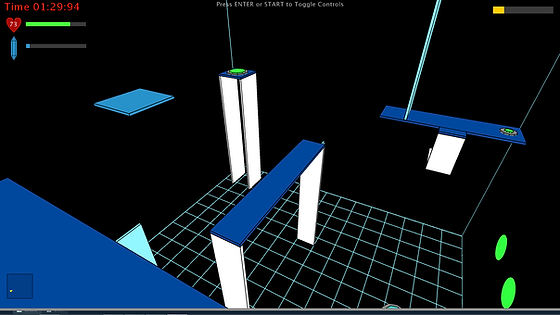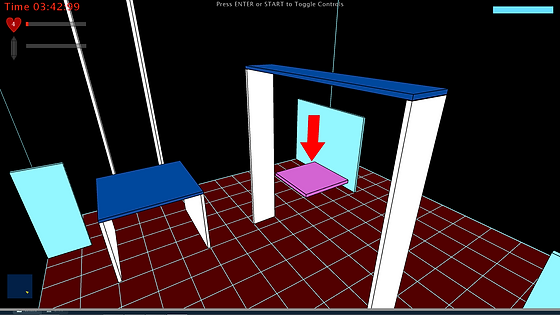Video play-through
.png)
Screenshot #1
.png)
Screenshot #2
.png)

PC/Controller Interface
Screenshot #3
.png)
Screenshot #4

Sample code
PLATFORMER VIDEO GAME
During my senior year at university I signed up for a class called Art for Interactive Media, an entry-level coding-based art class. Structured around a program called Processing, an open-source graphical library for visual arts, the class gave me an appreciation for how computer programming could be utilized in fun and innovative ways.
The final project was open-ended. So long as we leveraged some of the concepts taught throughout the year, we had the choice of what to make. I’ve always wanted to make a video game, and I was going to see it through. I knew it would be a challenge. Processing isn’t exactly setup out-of-the-box to handle a project like that.
Weeks went by, working and tinkering with Processing’s 3D capabilities. There were nights I worked into the early hours of morning, trying to develop a physics collision system, realistic gravity, and managing how the camera would handle various player input sequences. It spiraled into a bit of an obsession project.
The game allows the player to navigate and control aspects of a 3D space using a GameCube controller. There’s a simple puzzle involving buttons and lights that must be completed before time expires. It all came together pretty well; there are sound effects, there’s a health tracker, there’s some moving platforms and walls, there’s even a hidden crystal that spawns a special platform. Given more time, I would have added more interaction and made the feedback to the player more subtle to make the experience a bit more streamlined. But hey, it turned out alright.
Many of my original ideas had to be scrapped due to time. My intent was to add options for non-rectangular walls and platforms, walls with cutouts, different power-ups that affects movement in different ways, and multiple rooms with different objectives. Coding realistic physics, collision detection, and player movement sequences took precedent however, as these aspects required a substantial amount of thought and trial and error (again, Processing is not a game engine). Often times I found my first approach didn’t work. But after re-thinking these problems and brainstorming different solutions, I think the game looks pretty good!

